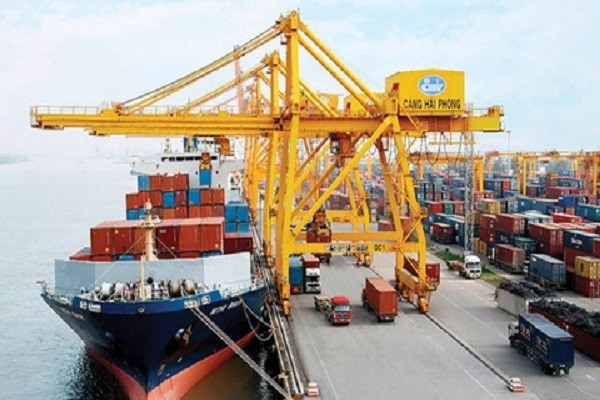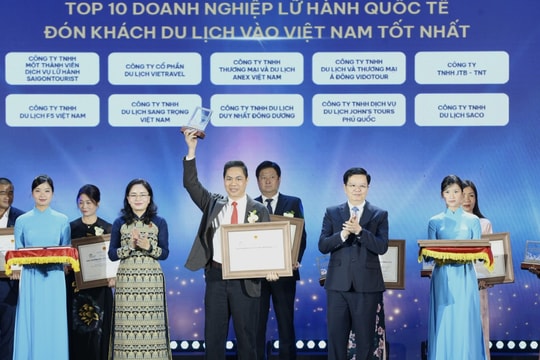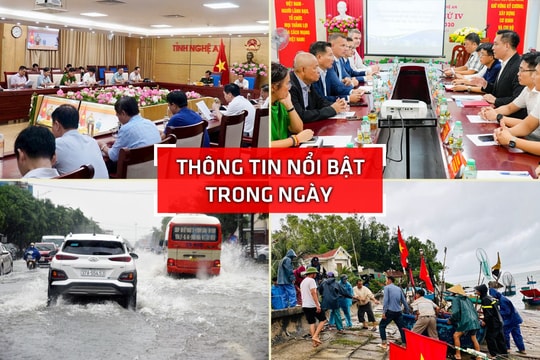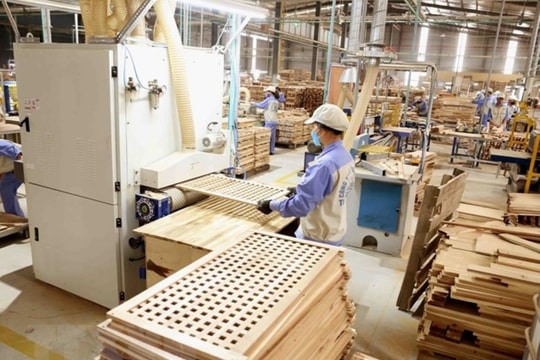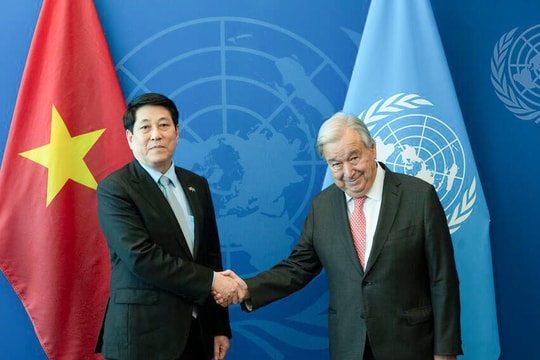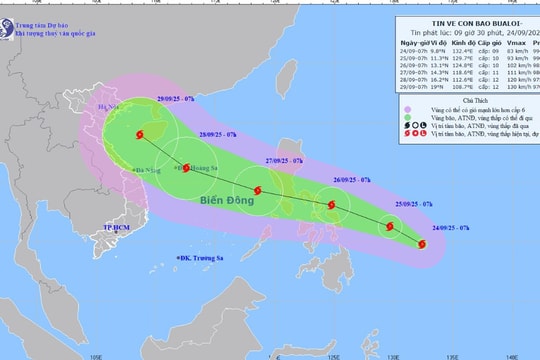Signaling a Vietnam 'escaping the middle class and reaching the high-speed highway' in the near future
Vietnam's fortunes have never been as good as they are today; the country is on the rise; the time has come; the shortcomings, shortcomings, and weaknesses have been clearly seen; the 13th National Party Congress is being comprehensively prepared. All of these signal a Vietnam that will "escape the middle class and reach the highway" in the near future. We need to prepare the vehicles to travel on those highways.
In recent years of innovation, Vietnam has made every effort to build highways, airports, and seaports as quickly as possible. In May 2020, the Government will submit to the National Assembly the North-South High-Speed Railway project after many years of preparation, including some sections that were built early and some that were built later. Thus, the most vulnerable area of transportation, the railway, has not continued to lie still. Vietnam's transportation infrastructure has never had such comprehensive and outstanding development as it does now and in the next few years.
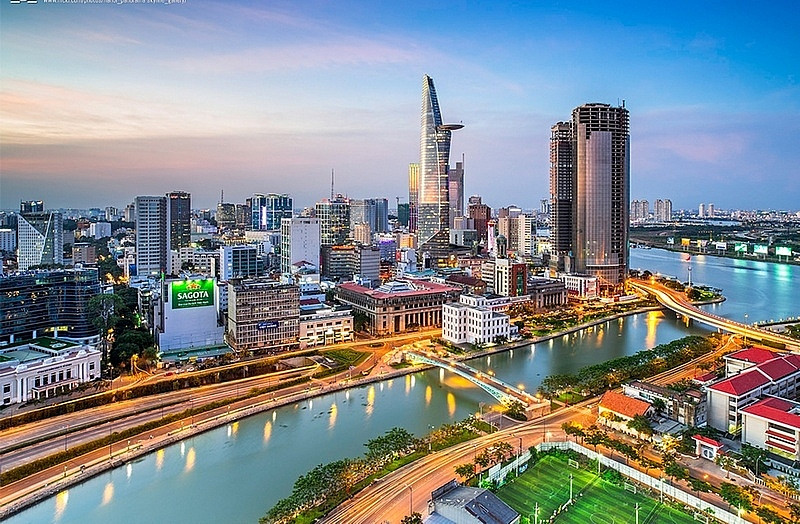 |
| A corner of Ho Chi Minh City. Illustrative photo |
Compared to transportation, information is behind but ahead in modernization, approaching the world highway. Just from the beginning of the 20th century until now, generation 2.0 has been eliminated, generation 3.0 is eliminated even faster by 4.0, and generation 5.0 is about to usurp the throne of 4.0 which is not yet hot. Vietnam's information infrastructure has never been modernized as quickly as it has achieved today.
On February 12, 2020, the European Parliament approved the EVFTA Free Trade Agreement after many years of negotiations. This agreement, along with 12 other FTAs that Vietnam has signed and is in effect, including the Comprehensive and Progressive Agreement for Trans-Pacific Partnership (CPTPP), has opened the country's trade avenue to a series of G7 and G20 countries across Asia, Europe, America, and Australia. Some people in the world have said that Vietnam is becoming a geopolitical power. Vietnam's foundation in terms of trade and geopolitical space has never been as open and sustainable as it is today.
Thus, the country's information, transportation and trade highways are ready for the Vietnamese economy to accelerate in production and circulation of goods and services to all regions of the country; at the same time, carry out exports and imports with most of the United Nations member countries.
As for countries that have FTAs with Vietnam, zero tariffs will be applied to most goods and services as soon as the agreement comes into effect, and the rest will continue to be applied in the following years. In order to be able to accelerate when the above highways are opened, the domestic business system cannot continue to "feel the stones to cross the river" with businesses that will forever be "small, medium and small" as in the past years.
|
| Businesses cannot remain "tiny, small, medium" forever. |
First of all, 5 million rural households must quickly have the institutions to become business farms in the modern agricultural sector. These farms do not need "massive scale" of land like the previous farms and plantations. The farms only need a sufficient scale to implement the method of "farming like gardening". This scale and method have been and are being implemented with high efficiency in the global value chain in many localities in growing flowers, fruits, medicinal herbs, short-term industrial crops, and even growing rice with the highest quality in the world in Long An.
If 5 million family-owned economic households are transformed into modern agricultural business farms, the "New Rural Area" will accelerate on the information, transportation, and trade avenues that have been opened. It requires a suitable mechanism for 5 million family-owned economic households in rural areas, first of all, the promulgation of a law on this type of enterprise. That law, together with other State creations, will be the necessary and sufficient method so that agriculture - farmers - rural areas will no longer be a low-yield area, a good harvest but low prices, and a place where the disadvantaged have to ride the last carriage of the Vietnamese economic train.
For the 800,000 existing private enterprises (PIEs), and the one or two million that will be in the near future, there needs to be an institution to make this sector an important driving force of the economy. Accordingly, it is time to leave behind the incorrect views about PIEs, which even placed this sector against state-owned enterprises (SOEs) during the planning period. And it is also time to put domestic private economic groups on par with foreign economic groups.
Over the past two decades, the State has succeeded in a difference from many Asian countries in rolling out the red carpet to invite foreign economic groups to invest and do business in Vietnam. Now, the second red carpet needs to be rolled out to honor and create the birth, growth and effective operation of domestic private economic groups. By doing so, once again, Vietnam puts its economy on the information, transportation and trade highways with both foreign economic groups and domestic private economic groups.
For over a thousand state-owned enterprises, it is time to leave behind the "snail" speed of equitization that has plagued them for decades. Accordingly, this slow pace must be a focus for handling. The equitization process has dragged on for too long and needs to be completed at a "high speed" to quickly release several trillion VND of capital that is stagnant in these enterprises, providing for the urgent needs of the capital-hungry economy, while avoiding the State from having to take on more debt and liabilities.
More than ever, on the basis of the information - transportation - trade highways that have been opened, state management of the economy operating on those highways also needs to be innovated in a "high-speed" way.
Accordingly, the system should not always be in a state of needing to mobilize to carry out small and large tasks as it has been for a long time; the cumbersome and overlapping apparatus cannot continue to be restructured at the slow pace as has been seen in the past decades; the personnel apparatus cannot be unfiltered to avoid "elephants passing through the eye of needles" as has been seen.
These realities clearly cannot interact with the opened high-speed platforms. To clean up the above mess, the "things to do immediately" method proposed and implemented by the late General Secretary Nguyen Van Linh in the early years of renovation now needs to be reused, first of all for: reducing deputy levels, reducing steering committees, reducing special working groups, reducing ministerial-level agencies, reducing general departments, reducing the duplication of names between local departments, branches and sectors with central ministries, branches and sectors, and making the Fatherland Front the common home of associations and unions.
Vietnam's fortunes have never been as good as they are today; the country is on the rise; the time has come; the shortcomings, shortcomings, and weaknesses have been clearly seen; the 13th National Party Congress is being comprehensively prepared. All of these signal a Vietnam that will "escape the middle class and reach the highway" in the near future. We need to prepare the vehicles to travel on those highways.

